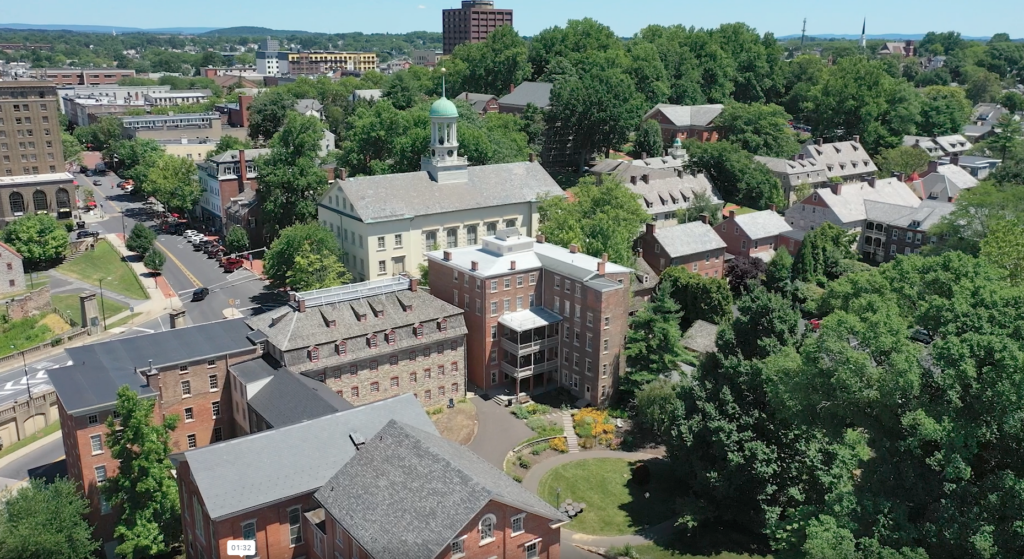A trifecta of World Heritage Sites in Pennsylvania

By Zabeth Teelucksingh
for Global Philadelphia
JANUARY 27, 2025 — As of July 2024, Pennsylvania is home to a tenth of the United States’ World Heritage Sites as determined by UNESCO.
Becoming a World Heritage Site means that a place is protected by law and eligible for preservation funding, and the unique cachet of UNESCO recognition also attracts greater media attention and increased tourism.
Pennsylvania now has more World Heritage Sites than any other state, giving it a distinct advantage in attracting visitors, particularly those from overseas or with a special interest in heritage. It’s easy to picture a dream road trip through Pennsylvania, built around its three World Heritage Sites.
Flying into Philadelphia International Airport, Independence Hall — arguably the birthplace of modern democracy — is the first historic place on the itinerary. For many people worldwide, there is no more potent symbol of freedom than this building, where both the Declaration of Independence and the United States Constitution were signed.
Today, it is the physical embodiment of a critical chapter in human history. Located in the heart of downtown Philadelphia, on the border of historic Old City and modern Center City, Independence Hall allows visitors to experience America’s past and present in one day.
Just over an hour’s drive north lies the historic district of Bethlehem, home to the Moravian Church Settlements.
This beautifully preserved area transports visitors back to the eighteenth century when the Moravians — a Christian sect that fled persecution in Europe — came to find religious freedom in Pennsylvania. This World Heritage site is linked to other European historic settlements, representing the Moravian Church’s worldwide influence: Hernhut in Germany, Gracehill in Ireland, and Christiansfeld in Denmark.
Four hours’ drive west of Bethlehem is Fallingwater, an architectural marvel designed by pioneering American architect Frank Lloyd Wright. In 2015, it was one of eight sites designed by Wright nominated for UNESCO status.
This extraordinary building, envisioned as being in complete harmony with its natural setting, is considered a prime example of Wright’s philosophy of “unity of design.” A visit to Fallingwater can be easily combined with a trip to nearby Pittsburgh, Pennsylvania’s second-biggest city. It is a tribute to Pennsylvania’s rich history that it is recognized as part of the global tapestry of world heritage, with not one but three UNESCO sites.
This unique advantage will help position the Keystone State on the international stage now, and for future generations.
Zabeth Teelucksingh is the President of the Global Philadelphia Association.
Read this story at City & State Pennsylvania